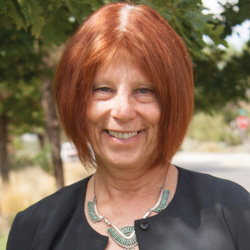Personal Statement
I am the Director and Founder of the Community Environmental Health Program (CEHP) in the College of Pharmacy at UNM-HSC. Currently I am also Co-Director of the Center for Native American Environmental Health Equity Research (Native EH Equity), a partnership including Crow, Sioux, and Navajo communities and agencies; the Principal Investigator of the Navajo Birth Cohort Study/Environmental influences on Child Health Outcomes (NBCS/ECHO), a community driven study on environmental exposures, birth outcomes, and child development on the Navajo Nation; and the UNM METALS Superfund Center, the first Superfund Research Center focused on indigenous communities.
Native EH Equity, NBCS/ECHO, and UNM METALS all have a specific emphasis on uranium and mine waste exposures on tribal lands. I have led this cooperative team that includes health scientists, geochemists, engineers, statisticians, Navajo Area IHS and Navajo Division of Health to design, obtain approval for, implement and analyze results from 3 generations of indigenous cohorts. The success of these initiatives has required strong leadership; a strong scientific background; an understanding of the complexity of cultural and environmental contributors to health in tribal populations; an appreciation of jurisdictional complexities and an ability to facilitate working relationships respectful of those boundaries. My unique background not only demonstrates that experience, but is supported by local, state, and national recognition of those capabilities.
In addition to more than 20 years of work with various Native American Pueblo, Crow, and the Cheyenne River Sioux tribes, I have worked on Navajo uranium exposure and health issues for more than 25 yrs, initially as a consultant to DOE developing Native American risk scenarios and baseline risk assessments for UMTRA sites on tribal lands; then, through one of the first NIEHS Environmental Justice grants, collaboratively developing the Dine College Uranium Education Center; and as PI for the community-based DiNEH Project examining, for the first time, community uranium exposures and health outcomes. I have facilitated and developed tribal risk assessments in USEPA Regions 6, 8, and 9 variously representing state, tribal, and federal agencies, as well as communities.
This work has led to acknowledgement of leadership from government officials through appointments to the city/county Air Quality Control Board; to leadership of the Environmental Health Task Force reporting to the NM Secretaries of Health and Environment; and through invited testimony to Tribal Councils, Legislative, and Congressional committees. Scientific recognition is demonstrated through elected office in the Society of Toxicology, and invitations to serve on a Blue Ribbon Panel to the NIH director and the team selected to review and make future programmatic recommendations on the NIEHS Superfund Basic Research Program. I was awarded the Griff Salisbury Award by NM Environmental Law Center for developing and defending a community-based recommendation reducing the uranium groundwater standard by orders of magnitude. The court challenge to that decision led to the first codification of the use of the precautionary principle in rule-making in New Mexico.
My ability to develop scientifically valid, novel methods has been recognized by appointment as the director of Novel Methodology Component for the UNM-HSC Clinical and Translational Science Center, and UNM-HSC recognition for Research Excellence in Population Research. Work to understanding the exposures to toxicants in Native communities, and appreciate the interactions with traditional lifestyles, culture, and health inform our understanding of cancer risk in these populations as well as strategies for risk-reduction.

